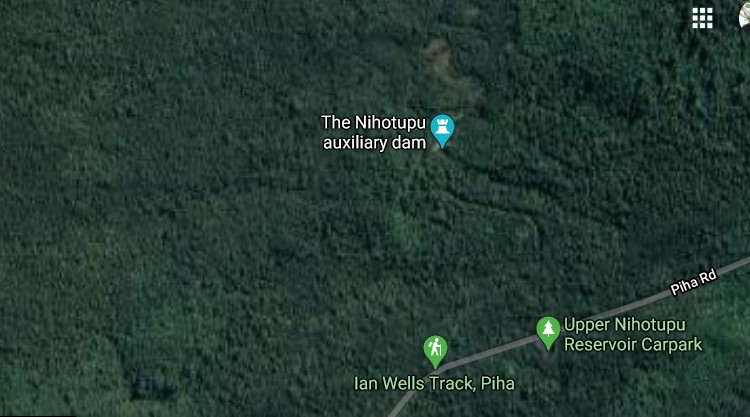Difference between revisions of "Nihotupu Auxiliary Dam - Visit"
(→What:) |
|||
| Line 25: | Line 25: | ||
Buttress dams are relatively rare in New Zealand. This was the only one in the Auckland supply system. The buttresses were unreinforced concrete and the sloping dam face supported by the buttresses was steel reinforced. | Buttress dams are relatively rare in New Zealand. This was the only one in the Auckland supply system. The buttresses were unreinforced concrete and the sloping dam face supported by the buttresses was steel reinforced. | ||
| − | A review of its safety by Garry Law in the 1980s indicated its stability was marginal. The stored volume was by that time of little significance and the cost of strengthening or replacing the dam prohibitive. It was decommissioned by cutting through the central | + | A review of its safety by Garry Law in the 1980s indicated its stability was marginal. The stored volume was by that time of little significance and the cost of strengthening or replacing the dam prohibitive. It was decommissioned by cutting openings through the two central slabs and collapsing the sections removed onto the valley floor. |
| − | |||
== What else to do there: == | == What else to do there: == | ||
Revision as of 23:05, 19 August 2020
| SITE TO VISIT | |
|---|---|
| Nihotup Auxiliary Dam | |
| ' | |
| | |
| | |
| Ethnicity: | European |
| Site type: | Water Supply Dam |
| Where: | Waitakere Ranges Regional Park, on Ian Wells Track to the north of Piha Rd. |
| How to get there: | Car |
| How Long to allow: | 45 Minutes |
| Disclaimer | |
Location
Waitakere Ranges Regional Park, on Ian Wells Track to the north of Piha Rd. It is a well formed track - the site is about 400 m along the track.
What:
A concrete buttress dam built 1919 - 1921 by Auckland City Council. It was built at the same time as Upper Nihotupu Dam to supplement its storage. It is on the same stream and upstream of the upper dam. Its storage volume was much less than its related dam. Normal operation was to leave it full and only drain it into the upper dam when that dam was drawn down and there was potentially a need for the water from the auxiliary dam. This happened a few times in its life.
Buttress dams are relatively rare in New Zealand. This was the only one in the Auckland supply system. The buttresses were unreinforced concrete and the sloping dam face supported by the buttresses was steel reinforced.
A review of its safety by Garry Law in the 1980s indicated its stability was marginal. The stored volume was by that time of little significance and the cost of strengthening or replacing the dam prohibitive. It was decommissioned by cutting openings through the two central slabs and collapsing the sections removed onto the valley floor.
What else to do there:
The revegetation of the former lake bed is proceeding largely by natural processes and indicates recruitment and growth in the passage of time since the decommissioning.
To the south of Piha Road is a track to Upper Nihotupu dam reaching first the lake and further on the dam.
External Sources
[Auckland Council Web Site|https://www.aucklandcouncil.govt.nz/pages/search.aspx?k=Nihotupu%20auxiliary%20dam]
